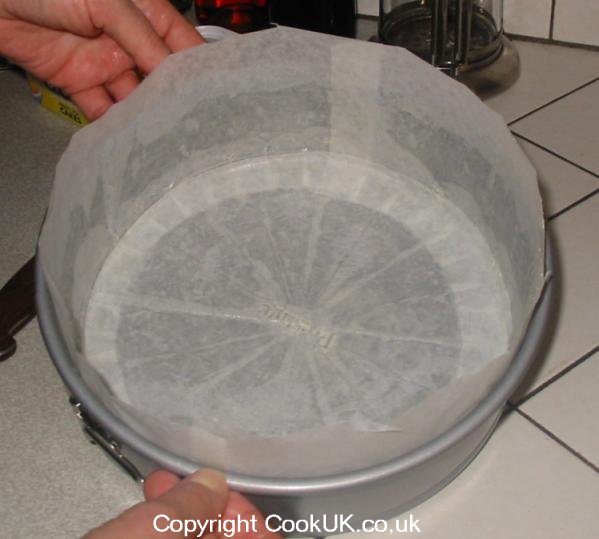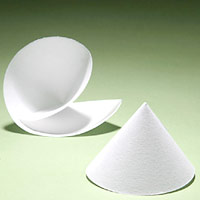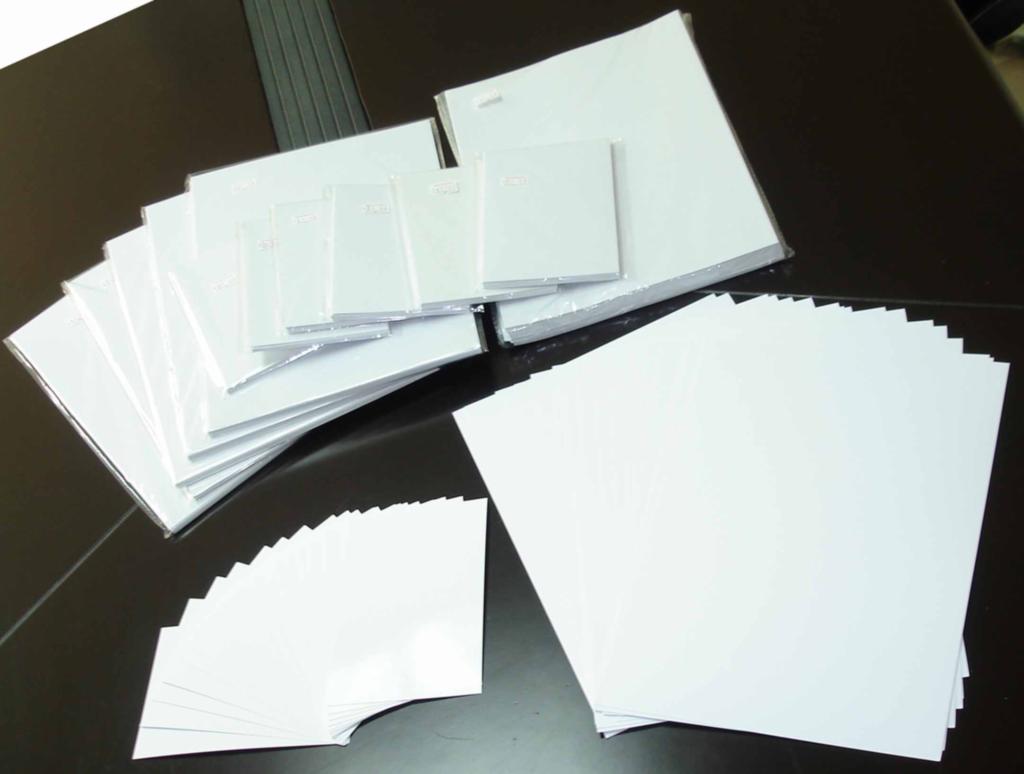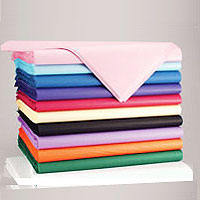Tuesday, 28 December 2010
'100...recycling paper'
On average, each person in the UK uses over 200 kg of paper per year. 66 % of this is collected for recycling
We use 12.5 million tonnes of paper and cardboard every year in the UK
About one fifth of the contents of household dustbins consist of paper and card, of which nearly half is newspapers and magazines. This is equivalent to over 4kg of waste paper and card per household in the UK each week
Recycled paper made up 80.6% of the raw materials for UK newspapers by the end of 2006
70% less energy is required to recycle paper compared with making it from raw materials
The average person in the UK gets through 38kg of newspapers per year
It takes 24 trees to make 1 ton of newspaper
Over Christmas as much as 83 square kilometres of wrapping paper will end up in UK rubbish bins
We get through nearly 3 billion disposable nappies each year in the UK alone and around 90% of these end up on landfill sites. Disposable nappies take 500 years to decompose
7 million trees are cut down every year just to make disposable nappies
The average British family throws away 6 trees worth of paper in their household bin a year
Every tonne of paper recycled saves 17 trees
To grow enough trees to provide the amount of paper that Britain uses each year, you would need a forest the size of Wales.
http://www.wasteonline.org.uk/resources/informationsheets/paper.htm
Monday, 27 December 2010
'100...images of types of paper'
 |
| greaseproof paper |
 |
| corrugated cardboard |
 |
| cardboard |
 |
| sugar paper |
 |
| filter paper |
 |
| photo paper |
 |
| printer paper |
 |
| kitchen paper towel |
 |
| parcel paper |
 |
| tissue paper |
 |
| toilet paper |
 |
| tracing paper |
 |
| cartridge paper |
Sunday, 26 December 2010
'100...how to make paper'
this is how to make your own paper at home the method images and videos are all source directly from the link below.
The method to make paper was developed in 105 A.D. by Ts'ai Lun. This paper was made from tree bark, rags, and hemp. In 610, the art of paper making reached Japan. In fact, you can still find some of the world's most beautiful paper coming out of Japan.
By 751, Chinese prisoners of war were in the area that is now Afghanistan. The Chinese prisoners began making paper--thus, spreading the methods to Baghdad Egypt, Damascus, and Morocco.
Paper making reached Europe in 1200. The 19th century brought about the industrialization of papermaking.
Today, most paper is machine made. There are still many people in regions throughout the world who keep up the tradition of making paper by hand.
Now, you can make paper at home.
How to Make a Deckle
- Deckle for Papermaking
A simple method for making your own deckle at home with supplies you can find at any craft or hardware store. - Making a Deckle Box
Another easy way to make a deckle, but in a different format. It also talks about making different sized deckle boxes.
Step-by-Step Photos for Steps 1-3
Click thumbnail to view full-size





Step 1: See the two parts of the deckle, the larger part is the top.
Step-by-Step Photos for Steps 4-5
Click thumbnail to view full-size




Step 4: Hold the deckle in the water with one hand.
Step-by-Step Photos for Steps 6-7
Click thumbnail to view full-size




Step 6: Remove the top of the deckle.
Step-by-Step Photos for Steps 7-8
Click thumbnail to view full-size




Step 7: Use the sponge on the screen to remove excess water.
Step-by-Step Photos for Steps 8-9
Click thumbnail to view full-size




Step 8: Flip the pulp and blotter over onto a dry blotter page.
Paper Making with Lonnie and Jacqueline
Making Paper with 4th Graders
Embellishments
Click thumbnail to view full-size




To add a picture, simply place the photo on the pulp while it is still under water.
Quick Papermaking Demo
What You Will Need:
- Blender
- Rolling Pin
- Flat workspace
- Kitchen sink with stopper, or large plastic tub
- Kitchen Towels, or rags
- Paper Blotters
- Deckle (make your own, or buy one at a craft store)
- nylon screen
- sponge
- leaves, moss, glitter, or other decorations
- Paper - you can use old envelopes, papers, newspapers, stamps (but avoid glossy paper, like magazines)
- Microwave or hair dryer, if desired
Step 1
Assemble your deckle by fitting the larger frame over the screened side of the smaller frame.
Step 2
Fill your sink or tub with warm water (so it feels nice to touch--not too hot, not too cold). The water should be about three inches deep.
Step 3
Now, it is time to make your paper pulp. Tear your paper into squares (about 1"). Combine water with the paper in your blender. It should be about 2:1, two parts water to 1 part paper. Blend until the pulp is soft. You might see some chunks, but not any big ones.
Step 4
You are ready to pour your pulp. Place your deckle and screen in the sink (or tub), so the water is about 1" below the top of the deckle. Hold the deckle down under the water with one hand. With your free hand, pour the pulp into the deckle. Swish the deckle around.
Step 5
Lift the deckle straight up, draining the visible water. You want to keep the pulp even, so avoid tilting the deckle as you lift it. Once the visible water has drained, tilt the deckle. Wait for the water to stop draining.
Step 6
Place the deckle on a flat surface. Remove the top half of the deckle. There will be a layer of wet fiber (pulp) on the screen.
Step 7
Now, you need to sponge the pulp. Place your loose screen over the pulp. Use a moist sponge to evenly press over the pulp. Squeeze the sponge out into the sink, and repeat. You want to draw as much moisture out of the pulp as you can. Fold a kitchen towel, or rag, in half, then turn the pulp (with screen and deckle) over onto the towel. Use the sponge on the deckle screen to remove excess water. Squeeze out sponge and repeat.
Remove the deckle, leaving the pulp pressed against the loose screen. You can peel the pulp off of the deckle if it sticks.
Step 8
It is time to couch (pronounced koo-ch) the paper pulp. Flip the screen and pulp onto a piece of blotter paper. The pulp should be sandwiched between the screen and the blotter. Use a rolling pin to roll over the pulp sandwich. The pulp will transfer from the screen to the blotter. This method is called couching (kooching). Couch the paper again, onto a dry blotter. If your paper pulp is still really wet, couch again.
Step 9
Carefully lift one corner of the pulp sheet, slowly peeling it off of the blotter. It is time to let the paper dry. You can let it air dry (which takes 1-3 days depending on humidity), heat it in the microwave for about 1-2 minutes, or use a blow dryer on the paper.
Don't be surprised if your paper curls. To flatten it, stick it under some heavy books overnight.
You have just made one piece of paper!
heres another site you can go to the learn how to make
your very own homemade paper.
http://www.funsci.com/fun3_en/paper/paper.htm
Subscribe to:
Posts (Atom)






